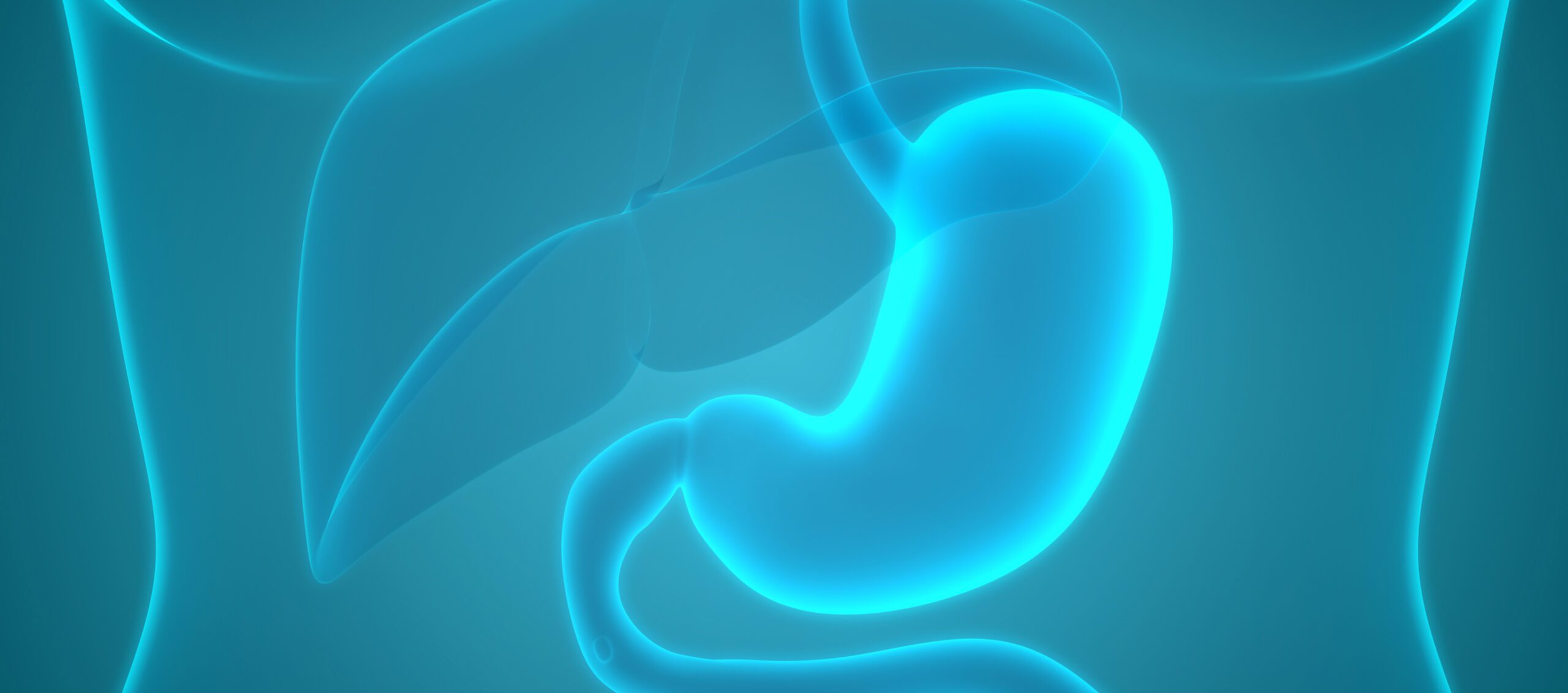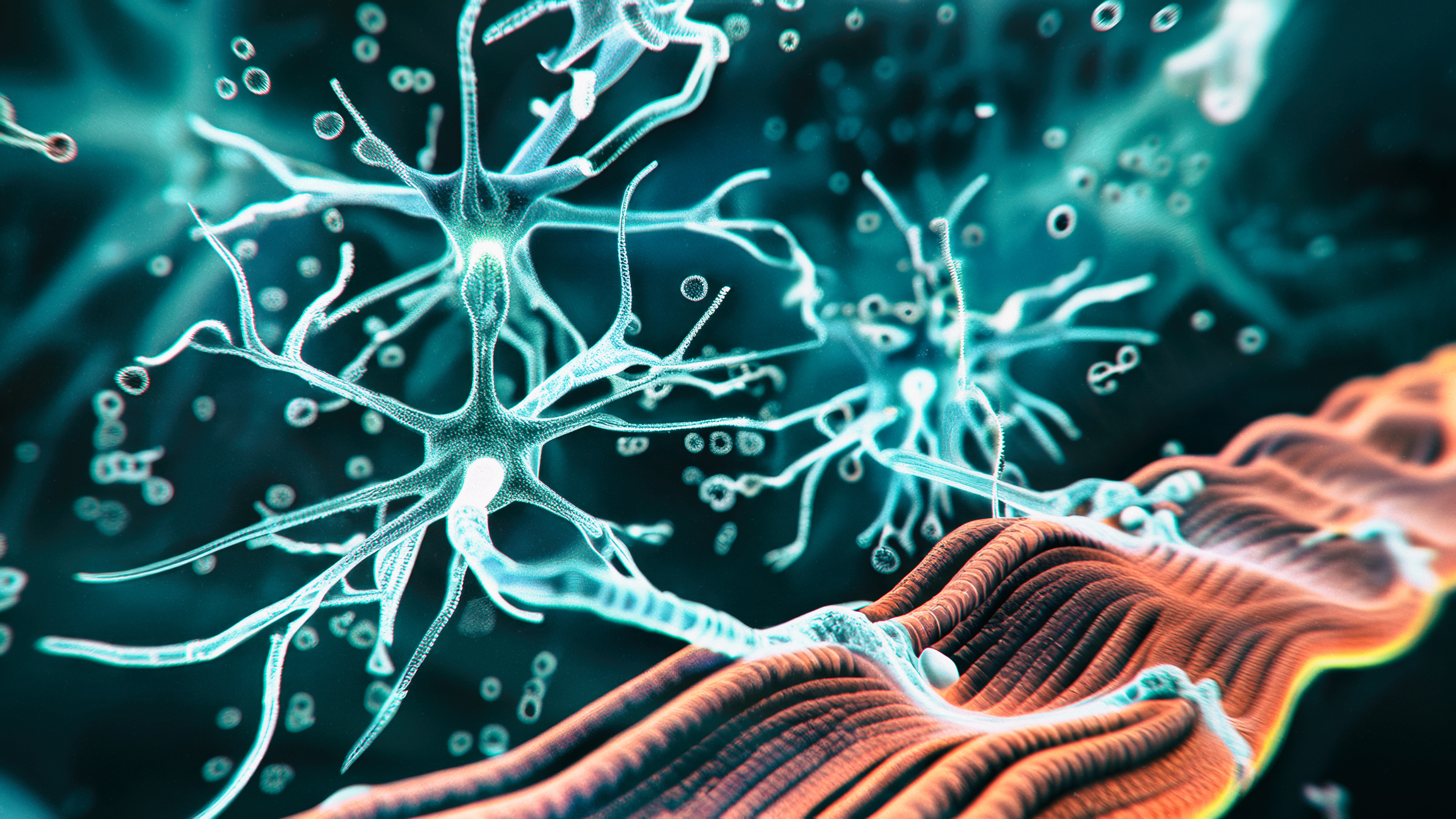Approximately one-third of patients are at increased risk for malnutrition or are already malnourished upon hospital admission. Older age and the presence of multiple comorbidities significantly increase the risk for disease-associated malnutrition (KAM). Acute illnesses in particular are often accompanied by reduced food intake, for example through loss of appetite. As a result, weight loss occurs.
You can take the CME test in our learning platform after recommended review of the materials. Please click on the following button:
About one-third of patients are at increased risk for malnutrition or are already malnourished when they enter the hospital. Older age and the presence of multiple comorbidities (polymorbidity) significantly increase the risk of disease-associated malnutrition (DMN): In some studies, up to three quarters of patients >65 years of age were at risk of malnutrition or were already malnourished [1]. Acute illnesses in particular are often accompanied by reduced food intake, for example through loss of appetite. As a result, weight loss occurs: just 5% unwanted weight loss in 3 months means a reduced nutritional status – that’s 3.5 kg for a person weighing 70 kg. In combination with increased metabolism and catabolic processes, and the resulting increased energy and protein requirements, the risk for KAM increases [2].
The term “disease-associated” malnutrition refers to the interactions: on the one hand, illness leads to malnutrition. Essential here are inflammations as well as hormonal changes (increased cortisol and reduced sex hormone concentrations), which drive catabolic metabolic processes [3]. On the other hand, malnutrition can negatively influence the course of the disease [1]. For example, studies show a strong association between KAM and increased morbidity and mortality, prolonged hospital length of stay, and decreased physical function. For patients, KAM often means a deterioration in quality of life [4]. A kind of vicious circle is formed in which malnutrition is self-reinforcing and can simultaneously be the cause and consequence of undesirable outcomes. For example, cachexia is also a significant syndrome in malnourished patients, such as geriatric or oncology patients [1]. Cachexia is a “complex metabolic syndrome” with disease-associated loss of muscle mass with or without fat mass [5]. It is related to inflammatory processes and hormonal changes, among others, which decreases or inhibits the synthesis of muscle protein and consequently promotes muscle catabolism. Accelerated or excessive loss of skeletal muscle mass distinguishes cachexia from pure KAM [5,6].
Role of (general) practitioners: Many patients are already malnourished on admission to hospital or have an increased risk of malnutrition. The earlier this is recognized and a therapy is established, the better the prognosis. Doctors treat patients before and after hospitalization. (General) practitioners therefore have a central role to play in dealing with CAM in all areas: from prevention and the associated identification of risk factors (section 2) and (the risk of) malnutrition (section 3), (outpatient) nutritional therapy (section 4) through to ensuring long-term therapeutic success (section 5). The regular measurement of the weight trend plays an essential role.
How can malnutrition be prevented and what are the risk factors?
Patients with pronounced cachexia respond less well to nutritional therapy. Therefore, and to avoid negative consequences of KAM, its prevention should be preferred over therapy. If an increased risk of malnutrition is addressed early, full-blown KAM can be prevented [7]. Prevention is therefore particularly important in high-risk patients, e.g. with primary tumors in the gastrointestinal tract (weight loss in up to >80% of patients) [8]. In addition to older age as the greatest risk factor [9] and polymorbidity, there are other factors that are associated with CAM in older patients (Fig. 1) [1,3,10–13]:
reduced food intake, e.g. due to
- Loss of appetite, e.g. due to age-related anorexia, reduced taste perception & thirst sensation, inflammatory processes/cachexia (e.g. in cancer), multi-medication, gastrointestinal diseases
- chewing and swallowing difficulties, e.g. due to muscle weakness
- psychosocial factors, e.g. due to loneliness, depressive moods, dementia
- Poor access to food (poverty in old age, reduced mobility/transportation & difficulties in cooking)
reduced digestion and absorption, e.g. due to
- (gastrointestinal) diseases, multimedication
catabolic metabolic state with increased energy/protein demand, e.g. due to
- Malnutrition, inflammatory processes/cachexia (e.g., in cancer).
- Immobility/reduced mobility
- Hormone changes
Immobility/reduced mobility, e.g. due to
- psychosocial factors, poverty in old age
- neurological or mental disorders, hearing/eye limitations
- Loss of balance
- Diseases of the musculoskeletal system, (fear of) pain, muscle degradation/weakness (due to malnutrition).
Role of (family) doctors: Due to the long-term care and their role as the first point of contact, (family) doctors as primary care providers have more regular contact with older patients than the hospital. In their practice, risk factors can therefore be regularly checked and detected at an early stage. The aim of the preventive measures to be introduced then is to avoid a KAM. Possible measures include, for example, education and awareness-raising as well as initial suggestions for optimizing the diet, e.g. a targeted selection of protein/nutrient-rich foods and their inclusion as snacks between meals (see section 4) [2,7].
How can malnutrition be detected?
Malnutrition is multifactorial, which is why no single parameter can be used for diagnosis. Screening tools have therefore been developed which provide information on whether there is a risk of malnutrition, e.g. the Nutritional Risk Screening (NRS-2002), Mini Nutritional Assessment® (MNA), Subjective Global Assessment (SGA) or Malnutrition Universal Screening Tool (MUST). They have been validated for different patient populations and settings and are used accordingly [7].
Therefore, if screening indicates a risk for malnutrition in the first step, an individual assessment follows to establish the diagnosis. The Global Leadership Initiative on Malnutrition (GLIM) has developed a diagnostic scheme for this purpose (Fig. 3): As part of the assessment, phenotypic (unintentional weight loss, low BMI and reduced muscle mass) and etiological criteria (reduced food intake and inflammation, acute illness or trauma) are recorded. For diagnosis, one criterion must apply in each case, depending on the phenotypic criteria, the classification of severity is made [14].
Role of (general) practitioners: The MUST is recommended for screening for malnutrition in outpatient care (Fig. 2). A score is calculated from body mass index (BMI), weight loss and abstinence from food, which indicates the risk of CAM. Depending on this risk, measures must be taken and, if necessary, a nutritionist must be involved. Screening is repeated regularly even in low-risk patients (e.g., annually in >75-year-olds). If the risk is intermediate, closer monitoring should be performed [15].
CAVE: KAM can also occur in overweight people, since body weight is not the only factor in its development – weight history and the intake of protein and micronutrients are decisive factors. Of particular relevance in this context is so-called sarcopenic obesity, in which reduced muscle mass is accompanied by high fat mass. However, the risk is often underestimated. The pure body weight does not allow any statement about the body composition and the weight progression. However, both parameters are decisive in the development of KAM, which can also occur in obesity and can negatively influence the course of the disease. Therefore, special attention should be paid to this and a KAM should not be left untreated as a desired weight reduction [2,16].
Why and how is malnutrition treated?
As mentioned at the outset, KAM has a strong negative impact on disease progression and quality of life. However, this effect can be countered therapeutically, which can also lead to increased success in the treatment of the underlying disease [17]: Clinical studies show that nutritional therapy intervention cost-effectively improves various clinical outcomes, increases quality of life and shortens or avoids hospital stays. A meta-analysis with 27 included randomized controlled trials (RCTs) and 6803 patients confirmed the positive influence of nutrition therapy. Mortality and unplanned hospital readmissions in hospitalized patients were reduced by 27% and 24% respectively with nutritional therapy [18]. In a large Swiss study (Effect of early nutritional support on Frailty, Functional Outcomes, and Recovery of malnourished medical inpatients Trial, EFFORT), individualized nutritional therapy in polymorbid and predominantly elderly patients with (risk of) malnutrition even reduced mortality by 35% [19]. 82% of these patients were older than 65.
If malnutrition has been diagnosed, individualized nutritional therapy is therefore initiated (Fig. 3). As with any medical intervention, the patient is always at the center of planning and implementation. Their education, the inclusion of their interests and wishes, and their consent are essential [20]. Medical guidelines have been developed for the implementation of nutritional therapy for polymorbid or geriatric patients, among others [21,22]. Specific guidelines also exist for disease-specific needs, e.g., oncology, renal disease, or home parenteral nutrition [23–25]. They contain concrete evidence-based recommendations for action in everyday practice. The long-term goals of nutrition therapy are to maintain or increase muscle mass, functionality and mobility, as well as independence and quality of life. At the beginning, the individual nutritional goals are defined on the basis of energy and nutrient balance as well as disease-specific needs. The energy and nutrient balance results from demand and intake. For example, dietary intake can be determined using 24-h dietary surveys and dietary logs [2]. There are general guidelines for determining requirements, which are presented below (Table 1):
Energy: To determine the energy requirement, there are measurement methods (e.g. indirect calorimetry as the gold standard) as well as formulas for calculation. The latter are particularly suitable for everyday use due to their ease and speed of application [21]. However, in cases of extreme obesity, severe malnutrition, or intensive care patients, their accuracy is limited [2]. Therefore, they can only provide an orientation. When determining requirements, gender, nutritional status, physical activity (PAL, Physical Activity Level) and clinical picture/severity as well as acceptance and tolerance should also be taken into account [21]. In contrast to the protein requirement, the energy requirement of overweight, malnourished patients is usually not adapted. They are fed isocalorically (i.e., according to the calculated requirement), since weight loss due to a KAM can lead to the aforementioned negative consequences, even if they are overweight [16].
Protein: Protein is essential for maintaining muscle mass, among other things. For older patients, a daily protein intake of up to 1.2–1.5 g/kg body weight is often recommended, but at least 1.0 g/kg [21]. In patients with renal disease, the protein requirement must be determined depending on the disease and treatment and may be as low as 0.8 g/kg [7]. If overweight according to BMI (>25 kg/m2), the protein requirement is calculated using an adapted normal weight (Table 1) [16].
Micronutrients: Micronutrient deficiencies usually accompany malnutrition, but these can occur even without a KAM [26]. Systematic reviews identified a high prevalence or increased risk of inadequate intake of various vitamins (A, C, E,B1,B2, B6, B12), calcium, magnesium, selenium, iodine and folate in older people [27–29]. The risk of deficiency increases with age as well as the number of comorbidities and can have serious consequences. Causes include reduced absorption, for example, due to physiological changes, (gastrointestinal) diseases, and multimedication, as well as the constant need for micronutrients with reduced energy requirements/absorption in old age [11]. The supply status of vitamins and minerals should therefore be analyzed, especially in malnourished patients, and any deficiencies compensated for with supplements [21,26].
Fluid: Nutrition therapy also includes treatment or prevention of dehydration due to insufficient fluid intake. The daily fluid requirement is about 1.6 l for older women and 2.0 l for men. However, the requirement can vary: At high ambient temperatures or fluid loss due to e.g. diarrhea or fever, the requirement is increased, for example, whereas in the case of kidney failure, for example, a restriction of the intake is necessary. The supply must be adjusted accordingly [21].
A step-by-step approach (Fig. 3) is taken when drawing up a nutrition plan, which should involve a multidisciplinary team (doctor, nutritionist, nurse, speech therapist, etc.). The nutritional goals should be achieved orally if possible. Possible options include a targeted selection of protein/nutrient-rich foods and their incorporation as snacks, food fortification or special nutritional supplements (oral nutritional supplements, ONS). If oral nutrition alone does not cover at least 75% of requirements after 5 days, enteral nutrition (EE) is supplemented via a tube, with the patient continuing to eat oral food. Only when needs are still not met or contraindications to RE exist is (supplemental) parenteral nutrition (PE) via a venous catheter indicated [2]. However, PE is less physiologic, as it does not pass through the digestive tract, and is associated with increased risks of complications (especially metabolic side effects), cost, and effort. Oral and enteral methods are therefore preferable, in part to preserve gastrointestinal structure, function, integrity, and motility, which may otherwise be compromised in the long term with prolonged nutritional abstinence [7,31]. Nutritional therapy is regularly reviewed and adjusted during the course. If the feed targets are not met, escalation to the next higher level occurs. If possible, the higher level should only be used as a supplement and temporarily [31].
How can the success of the therapy be ensured?
In long-term follow-ups, clinical studies have shown that nutrition therapy that is discontinued upon hospital discharge has no long-term effect on clinical outcomes, such as mortality and hospital readmissions [32]. In contrast, a large study of 652 elderly patients who continued nutrition therapy as outpatients achieved a reduction in 90-day mortality of over 50% [33]. A recent meta-analysis with a large number of patients and inclusion of recent high-quality studies (RCTs), a positive effect on mortality [34]. Particularly in chronically ill, often elderly, patients, long-term nutritional therapy is therefore indicated beyond the hospital stay in order to maintain its positive effect on the course of the disease and quality of life. The monitoring of the nutritional therapy during the course is essential in order to check the achievement of the goals, to recognize complications at an early stage and to adjust the therapy if necessary. Nutritional therapy is basically low in complications, but not entirely without side effects. Potential side effects or risks with non-oral nutrition therapies range from aspiration risk and tolerance problems (nausea, bloating, diarrhea, constipation) in EE to catheter infections and metabolic complications in PE. Ensure that there is no over- or under-nutrition due to incorrect calculation of requirements. A particularly serious, potentially life-threatening metabolic complication is refeeding syndrome. Dangerous electrolyte shifts may occur, which is why serum electrolytes and clinical symptoms (including tachycardia, tachypnea, edema) must be monitored in patients at risk for refeeding syndrome, especially at the beginning of nutrition therapy. Risk factors include low BMI, unintentional weight loss, prolonged periods of fasting, previous electrolyte imbalances, and alcohol dependence. Precautions must be taken, with only careful gradual increases in energy and fluid intake and substitution with micronutrients. Help to recognize and treat refeeding syndrome is provided by standardized medical guidelines [2,35].
Role of (general) practitioners: (General) practitioners have an important role to play in nutrition therapy as primary care providers, even after discharge from hospital. Central to the quality of therapy is, above all, the regulated transition from hospital to home nutrition therapy. Structured collaboration between the hospital and outpatient aftercare providers, e.g. physicians in private practice, homecare providers and nursing services, is essential. Especially in home-based EE or PE, for example, early planning, training of patients and relatives, and timely prescription and provision of nutrition and assistive devices are important. (General) practitioners are therefore a central link in the transition to outpatient nutritional therapy. Due to their long-term and close contact with patients, (general) practitioners are also important in monitoring progress and detecting complications. The follow-up is carried out, for example, by going through the diagnostic scheme again: anthropometric measurements as well as recording of food intake, individual laboratory parameters and general condition. If the goals cannot be achieved with the nutritional therapy interventions, the therapy is adapted with a nutritionist according to the step-by-step scheme. Only if the responsibilities for follow-up and aftercare are regulated can the long-term success of a nutrition intervention be ensured [2,35].
What is personalized nutrition?
The described diagnostics of malnutrition do not include specific biomarkers, as their exact influence and significance is largely unclear so far. It is known, however, that the therapy of a KAM, as described above, must be based on individual nutritional goals, since observations show that not all patients respond equally to nutritional therapy. However, variables such as BMI and disease severity offer only limited options in this regard. Particularly challenging are the multiple non-nutritional influencing factors and interactions in the context of the disease. Clinical research on biomarkers and potential predictors in nutrition therapy is therefore becoming increasingly important. With an improved understanding of the pathophysiology, patients can be divided into subgroups based on these parameters and their KAM can be subgroup-personalized [36,37]. Also, in light of limited health care resources, it may be useful and cost-saving to align diet with response to treatment. Promising predictors include specific acute illness and systemic inflammation (e.g., via C-reactive protein), decreased food intake, and muscle wasting (e.g., fist strength) [7,38].
Conclusion
Due to the high prevalence of CAM, it is important that the professional groups involved are aware of and trained in the topic. Since (general) practitioners treat patients long-term and most regularly, their role in dealing with CAM is central. Elderly patients are at risk, which is why regular monitoring of risk factors and nutritional status is especially important for them. Screening and diagnostic tools are available for this purpose. Ideally, KAM can be prevented or detected and treated at an early stage in outpatients. Finally, a stepwise approach and monitoring is important in nutrition therapy. This can reduce mortality, morbidity and length of hospital stay, and improve quality of life.
Take-Home-Messages
- The elderly in particular are at increased risk for disease-associated malnutrition (KAM). Up to three quarters are affected by hospital admission.
- Older patients in particular should therefore be checked for risk factors at the doctor’s surgery, their nutritional status monitored and, if necessary, preventive measures taken.
- The Malnutrition Universal Screening Tool (MUST) is useful for detecting KAM in outpatients. The diagnosis is then made using the so-called GLIM criteria.
- The therapy of KAM is carried out step by step on the basis of the energy and nutrient balance as well as disease-specific needs with the involvement of a nutritionist.
- Nutrition therapy should be continued on an outpatient basis to ensure the success of the therapy. Monitoring of therapy success and complications is important here.
Literature:
- Agarwal E, Miller M, Yaxley A, Isenring E: Malnutrition in the elderly: a narrative review. Maturitas 2013; 76 (4): 296-302.
- Aeberhard C, Friedli N, Leuenberger M, et al: Management of malnutrition in the hospitalized patient. Aktuel Ernaehr Med 2016; 41 (06): 429-436.
- Gressies C, Tribolet P, Schuetz P: Nutrition issues in the general medical ward patient: from general screening to specific diagnosis and individualized treatment. J Parenter Enteral Nutr 2022: 1-8.
- Felder S, Lechtenboehmer C, Bally M, et al: Association of nutritional risk and adverse medical outcomes across different medical inpatient populations. Nutrition 2015; 31 (11-12): 1385-1393.
- Evans WJ, Morley JE, Argilés J, et al: Cachexia: a new definition. Clin Nutr 2008; 27(6): 793-799.
- Felder S, Fehr R, Bally M, Schuetz P: Malnutrition in internal medicine patients. Despite great importance and recommended screening, therapeutic implications are still unclear. Switzerland Med Forum 2014; 14(24): 455-459.
- Schuetz P, Seres D, Lobo DN, et al: Management of disease-related malnutrition for patients being treated in hospital. The Lancet 2021; 398(10314): 1927-1938.
- Bozzetti F, Arends J, Lundholm K, et al: ESPEN Guidelines on Parenteral Nutrition: non-surgical oncology. Clin Nutr 2009; 28 (4): 445-454.
- Pirlich M, Schütz T, Norman K, et al: The German hospital malnutrition study. Clin Nutr 2006; 25(4): 563-572.
- MacIntosh C, Morley JE, Chapman IM: The anorexia of aging. Nutrition 2000; 16 (10): 983-995.
- Norman K, Haß U, Pirlich M: Malnutrition in Older Adults-Recent Advances and Remaining Challenges. Nutrients 2021; 13(8): 2764.
- Andreae S, Anton W, Bartoszek G, Bayer N: Altenpflege, 4th ed. Georg Thieme Verlag, Stuttgart, New York 2016.
- Bauer JM: Nutrition in old age – an essential key to maintaining functionality and quality of life. Gastroenterologist 2021; 16(5): 324-331.
- Cederholm T, Jensen GL, Correia MITD, et al: GLIM criteria for the diagnosis of malnutrition – A consensus report from the global clinical nutrition community. Clin Nutr 2019; 38 (1): 1-9.
- Kondrup J, Allison SP, Elia M, et al: ESPEN Guidelines for Nutrition Screening 2002. Clin Nutr 2003; 22 (4): 415-421.
- Thibault R, Abbasoglu O, Ioannou E, et al: ESPEN guideline on hospital nutrition. Clin Nutr 2021; 40 (12): 5684-5709.
- Valentini L, Volkert D, Schütz T, et al: Guideline of the German Society for Nutritional Medicine (DGEM). Aktuel Ernaehr Med 2013; 38 (02): 97-111.
- Gomes F, Baumgartner A, Bounoure L, et al: Association of Nutritional Support With Clinical Outcomes Among Medical Inpatients Who Are Malnourished or at Nutritional Risk: An Updated Systematic Review and Meta-analysis. JAMA Netw Open 2019; 2 (11): e1915138.
- Schuetz P, Fehr R, Baechli V, et al: Individualised nutritional support in medical inpatients at nutritional risk: a randomised clinical trial. The Lancet 2019; 393 (10188): 2312-2321.
- Oehmichen F, Ballmer P, Druml C, et al: Guideline of the German Society for Nutritional Medicine (DGEM). Ethical and legal aspects of artificial nutrition. Aktuel Ernaehr Med 2013; 38 (02): 112-117.
- Volkert D, Beck AM, Cederholm T, et al: ESPEN guideline on clinical nutrition and hydration in geriatrics. Clin Nutr 2019; 38 (1): 10-47.
- Gomes F, Schuetz P, Bounoure L, et al: ESPEN guidelines on nutritional support for polymorbid internal medicine patients. Clin Nutr 2018; 37 (1): 336-353.
- Pironi L, Boeykens K, Bozzetti F, et al: ESPEN guideline on home parenteral nutrition. Clin Nutr 2020; 39 (6): 1645-1666.
- Muscaritoli M, Arends J, Bachmann P, et al: ESPEN practical guideline: Clinical Nutrition in cancer. Clin Nutr 2021; 40 (5): 2898-2913.
- Fiaccadori E, Sabatino A, Barazzoni R, et al: ESPEN guideline on clinical nutrition in hospitalized patients with acute or chronic kidney disease. Clin Nutr 2021; 40 (4): 1644-1668.
- Lochs H, Allison SP, Meier R, et al: Introductory to the ESPEN Guidelines on Enteral Nutrition: terminology, definitions and general topics. Clin Nutr 2006; 25 (2): 180-186.
- Roman Viñas B, Ribas Barba L, Ngo J, et al: Projected prevalence of inadequate nutrient intakes in Europe. Ann Nutr Metab 2011; 59 (2-4): 84-95.
- Borg S ter, Verlaan S, Hemsworth J, Mijnarends DM, et al: Micronutrient intakes and potential inadequacies of community-dwelling older adults: a systematic review. Br J Nutr 2015; 113 (8): 1195-1206.
- Conzade R, Koenig W, Heier M, et al: Prevalence and Predictors of Subclinical Micronutrient Deficiency in German Older Adults: Results from the Population-Based KORA-Age Study. Nutrients 2017; 9 (12).
- Deutsche Gesellschaft für Ernährung e.V. (ed.): Ausgewählte Fragen und Antworten zur Energiezufuhr. 2015. www.dge.de/fileadmin/dok/gesunde-ernaehrung/faq/DGE-FAQ-Energie-2015.pdf, last accessed: November 28, 2024.
- Löser C, Löser K: Basic principles of therapy – established general measures. In: Löser C (ed.): Under- and malnutrition. Georg Thieme Verlag, Stuttgart.
- Kaegi-Braun N, Faessli M, Kilchoer F, et al: Nutritional trials using high protein strategies and long duration of support show strongest clinical effects on mortality: Results of an updated systematic review and meta-analysis. Clin Nutr 2021; 45: 45-54.
- Deutz NE, Matheson EM, Matarese LE, et al: Readmission and mortality in malnourished, elderly, hospitalized adults treated with a specialized oral nutritional supplement: a randomized clinical trial. Clin Nutr 2016; 35 (1): 18-26.
- Kaegi-Braun N, Kilchoer F, Dragusha S, et al: Nutritional support after hospital discharge improves long-term mortality in malnourished adult medical patients: systematic review and meta-analysis. Clin Nutr 2022; 41 (11): 2431-2441.
- Radziwill R: Transition from inpatient to outpatient settings. In: Weimann A, Schütz T, Ohlrich-Hahn S, Fedders M, Grünewald G (eds): Nutritional Medicine, Nutritional Management, Nutritional Therapy. Interdisciplinary Clinical Nutrition Practice Guide, 2nd ed. ecomed Medizin, Landsberg am Lech.
- Merker M, Felder M, Gueissaz L, et al: Association of Baseline Inflammation With Effectiveness of Nutritional Support Among Patients With Disease-Related Malnutrition: A Secondary Analysis of a Randomized Clinical Trial. JAMA Netw Open 2020; 3 (3): e200663.
- Zeisel SH: Precision (Personalized) Nutrition: Understanding Metabolic Heterogeneity. Annu Rev Food Sci Technol 2020; 11: 71-92.
- Keller U: Nutritional Laboratory Markers in Malnutrition. J Clin Med 2019; 8(6): 775.
InFo RHEUMATOLOGIE 2024; 6(2): 6-12
















